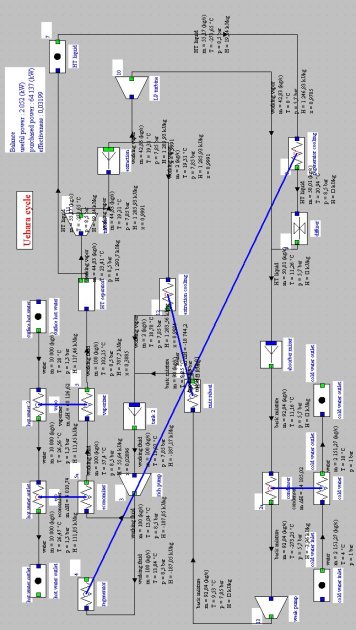Uehara cycle
In order to maximize a power generation cycle using ocean thermal energy, Uehara has developed a new cycle that he says is an improvement of the Kalina cycle, whose main feature is to simplify the composition change of the ammonia-water mixture by using a staged expansion with extraction (Figure below).
As for the Kalina cycle, the interest of this cycle is to replace evaporation and condensation of the working fluid at constant temperature by changes with temperature glide, thus reducing system irreversibilities.
Uehara cycle
In this cycle, an ammonia rich mixture is heated in an economizer (4-5a) and an evaporator (5a-5) and exits in the two-phase state. The vapor (6) and liquid (7) phases are then separated, the first being expanded at an intermediate pressure in a turbine (6-11).
Part of this expanded stream is recirculated at medium pressure, then cooled (11-12) by exchange with the basic mixture (13-14), with which it is mixed to form the working fl uid, which is then delivered under pressure (15-3).
The main flow exiting the HP turbine is expanded at low pressure in a second turbine (11-10) then led to an absorber where it is mixed with the liquid fraction (7) leaving the separator and precooled (7-8) in the regenerator by exchange with the working fl uid leaving the rich pump (3-4), then expanded at low pressure (8-9).
At the absorber outlet, the basic mixture obtained is condensed before being compressed at the intermediate pressure (2-13).
Modeling in Thermoptim
Modeling of such a cycle in Thermoptim leads to a synoptic view of the type in Figure below. In our view, the main interest of this cycle is that it better valorizes the cold water from depths than a conventional closed cycle in which pumping takes a significant fraction of the power produced (10-15%): for the same water discharge temperature the working fluid may be cooled at lower temperature due to the temperature glide of the water-ammonia mixture.
Synoptic view of the Uehara cycle


